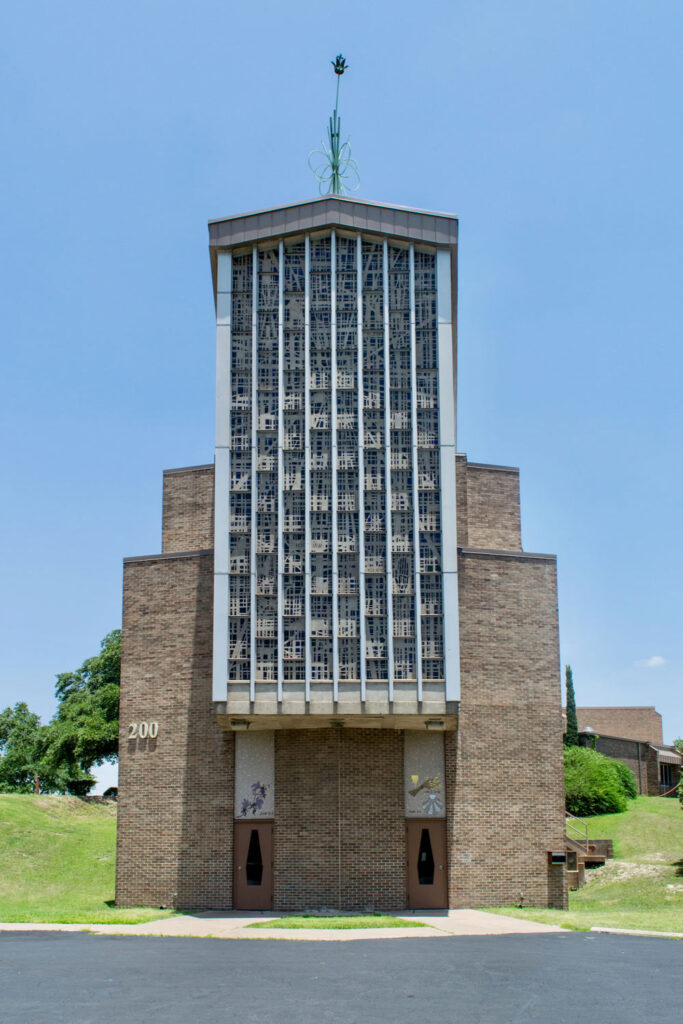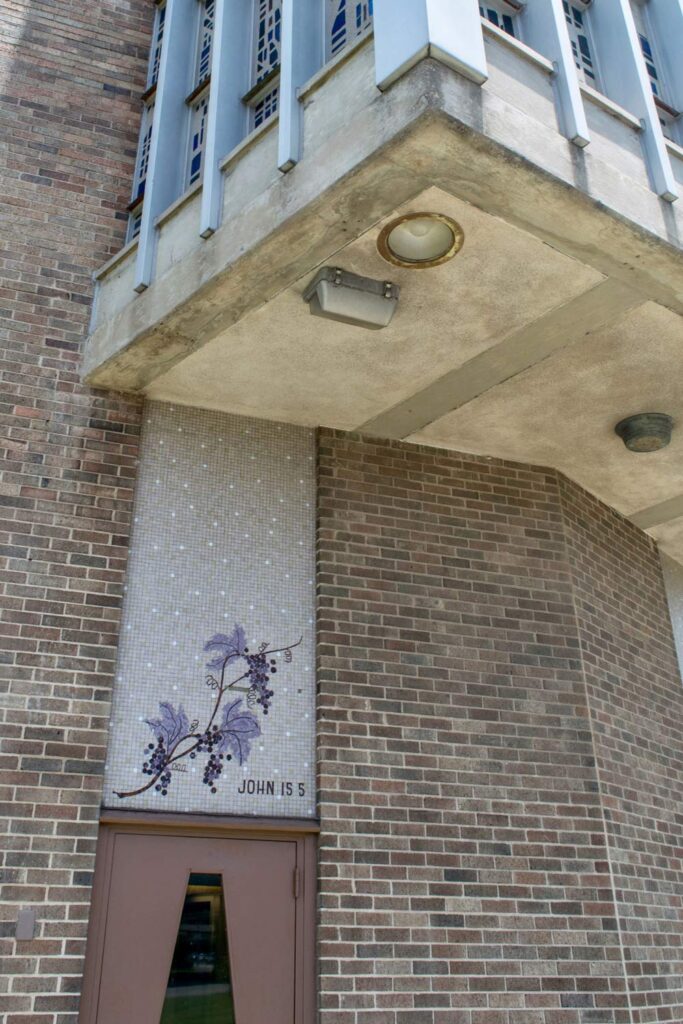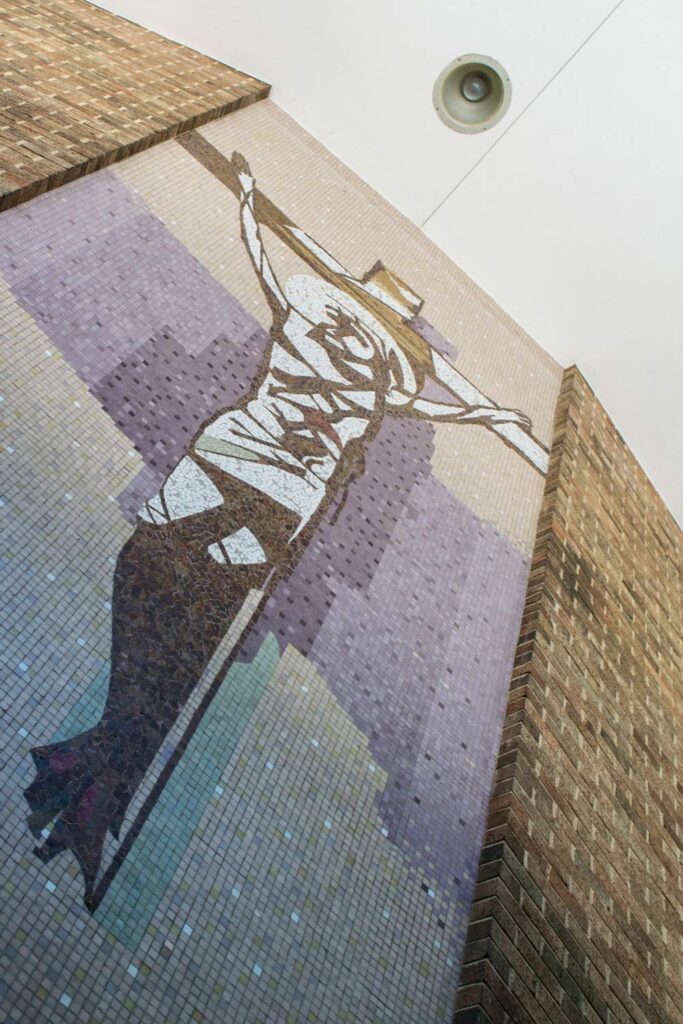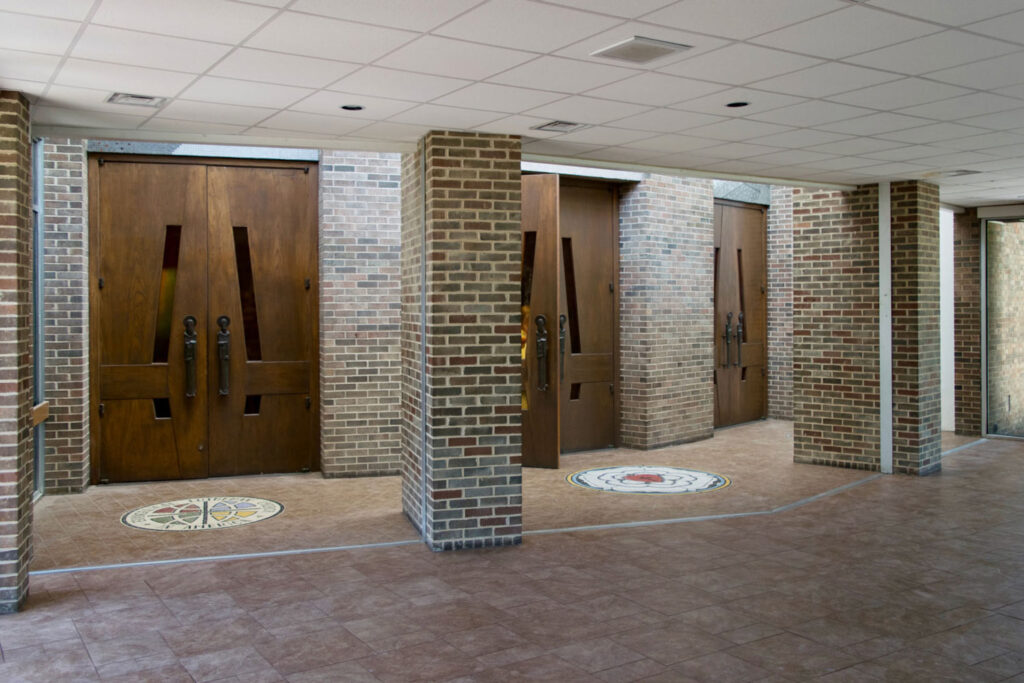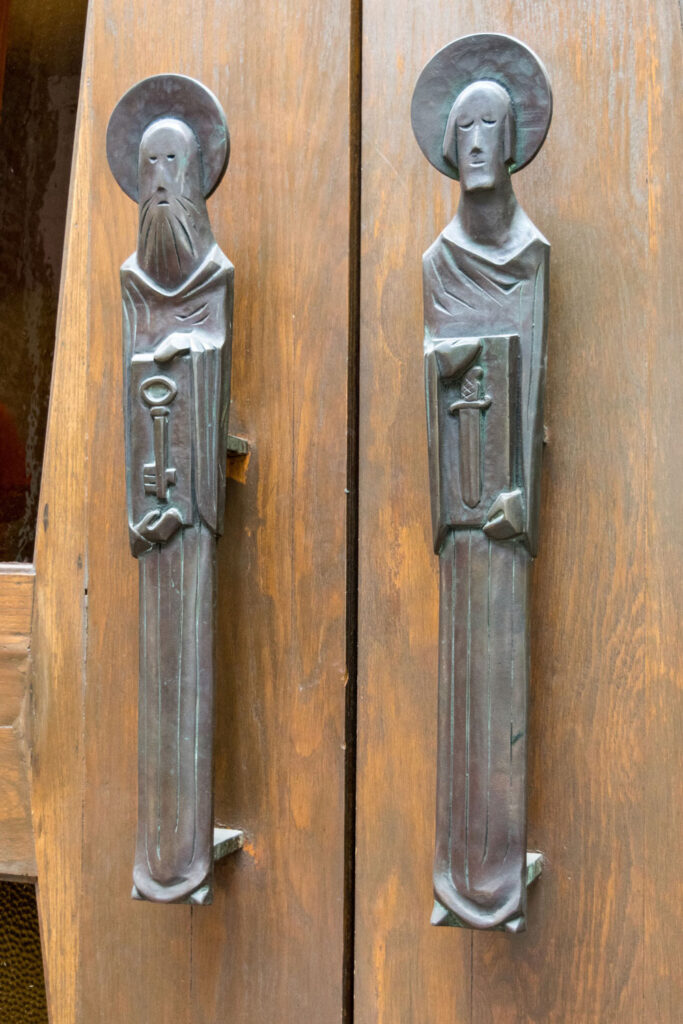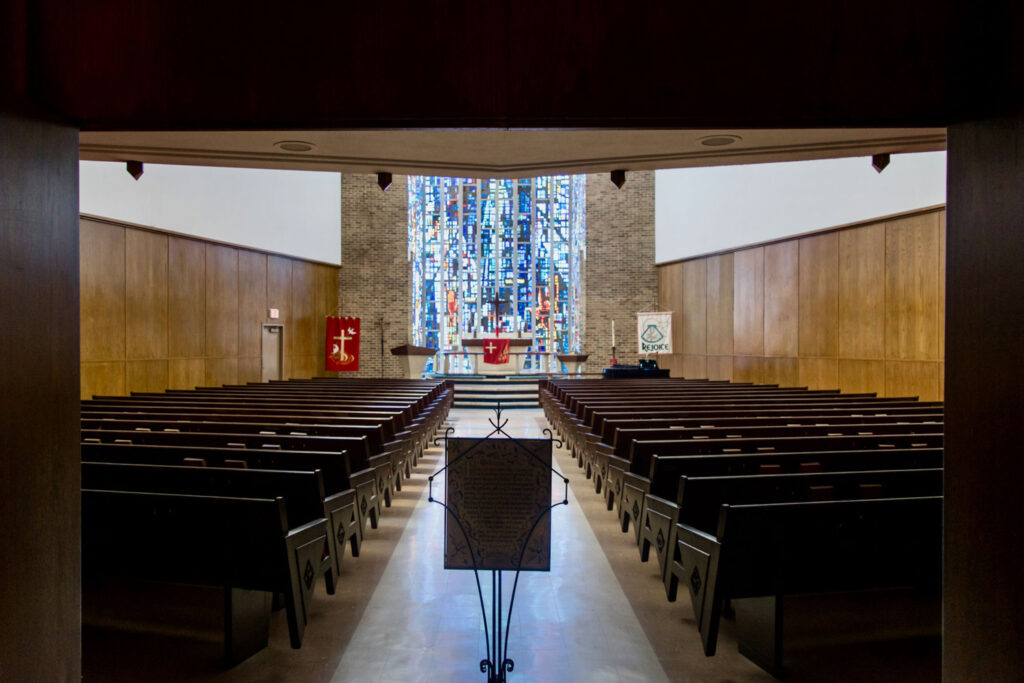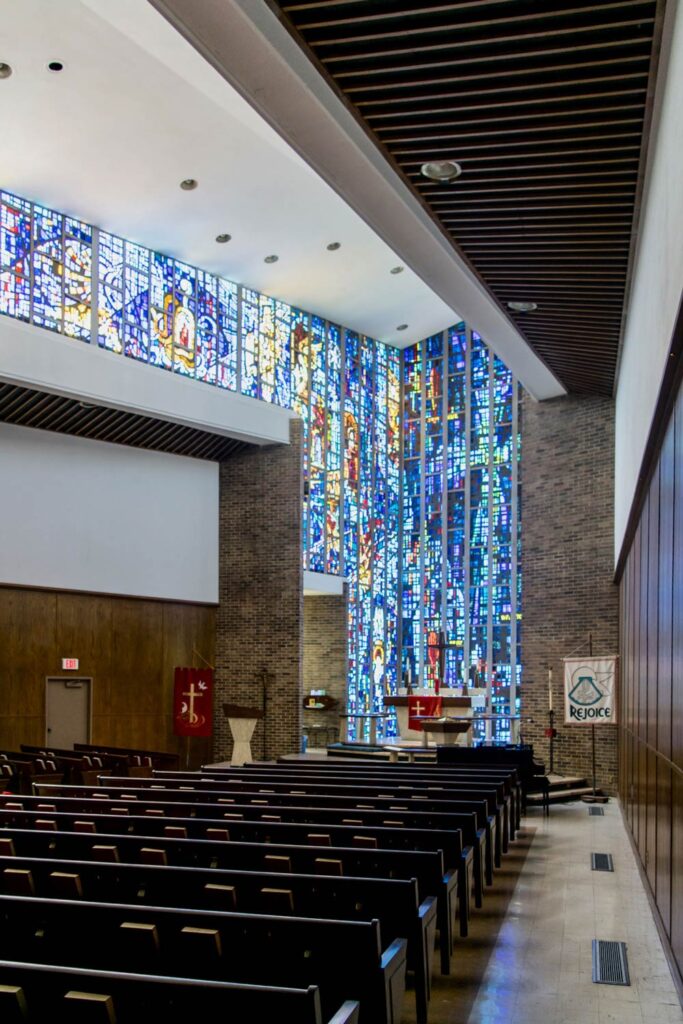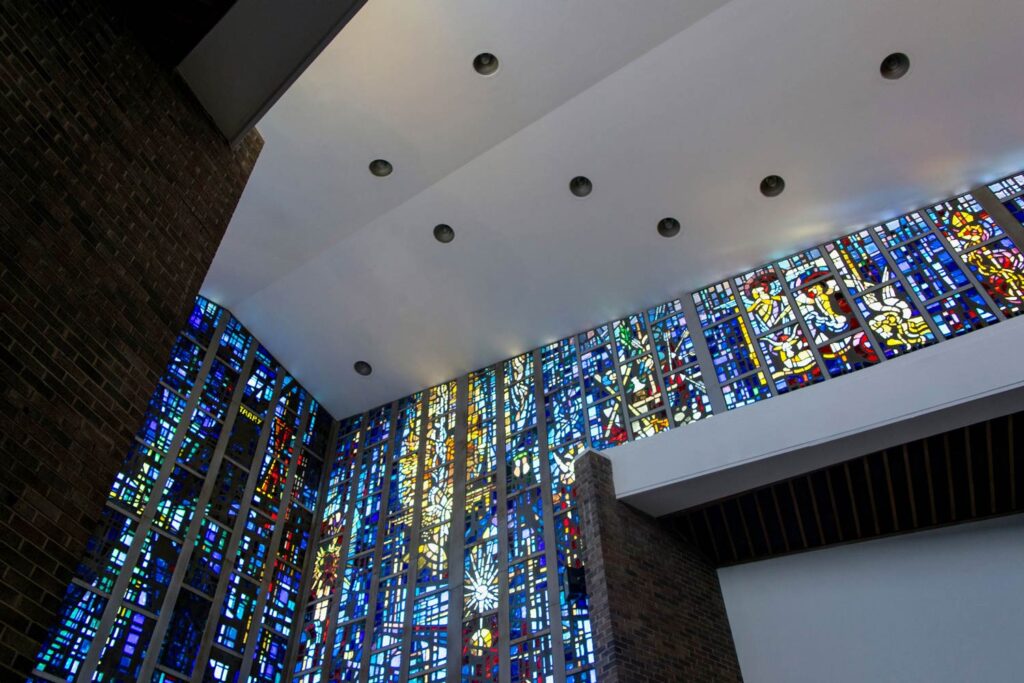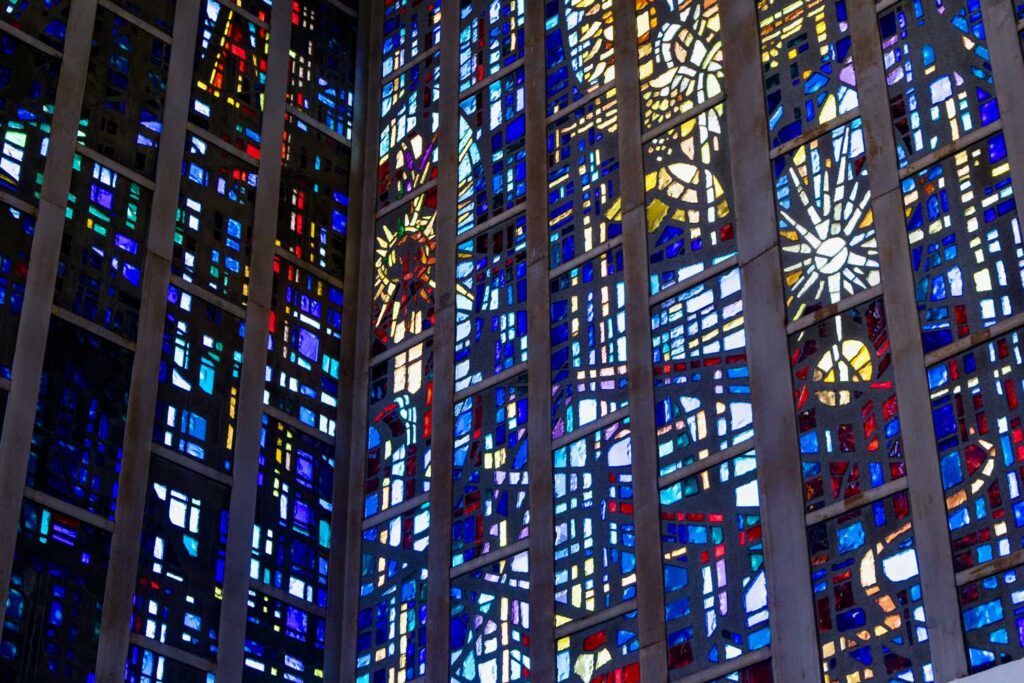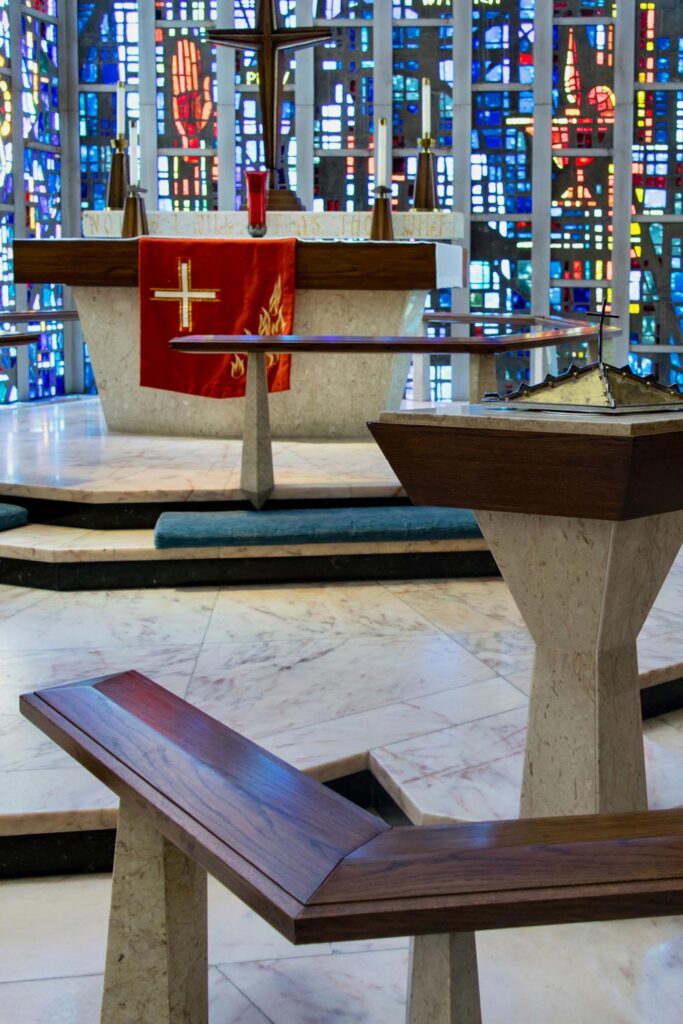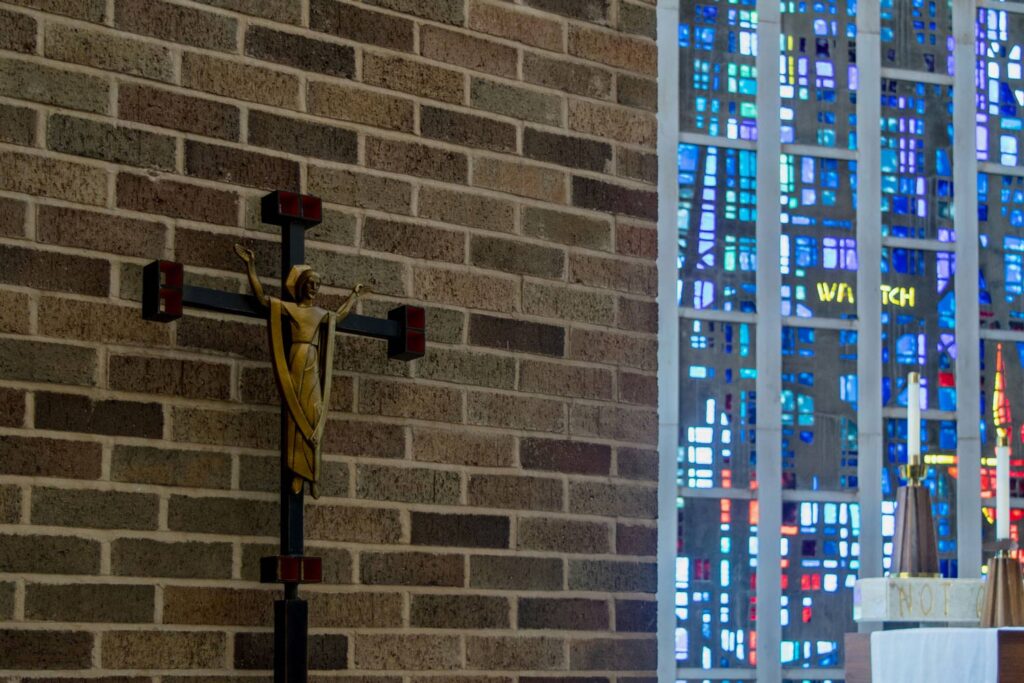This building is the second home of the Gethsemane Lutheran Church, the oldest Swedish Lutheran congregation in Texas. The parishioners decided to move from their original location at Ninth and Guadalupe Streets in 1962, relocating farther north to retain proximity to young families migrating to the suburbs. In the same year, the Augustana Synod denomination merged with several other Lutheran groups to become incorporated into the Lutheran Church of America, which expanded the demographic of worshippers beyond those of a specific national heritage. The church’s New Formalist style reflects the demographical and cultural shifts taking place in the Lutheran church during the mid-century era.
The congregation selected Austin architect Eugene Wukasch—by then a well-known figure with several other completed religious projects in the city—to design their new church. The new building was designed to reflect a return to a simpler, more community-oriented worship style. Applying Modernist principals to create an open worship space, Wukasch designed a floorplan composed to two overlapping trapezoids. The central trapezoid, which contains the sanctuary, cantilevers out nearly seven feet from the brick foundation. To further emphasize the form of the building, Wukasch added dirt to artificially slope the site and increase the drama of the floating, two-story south façade.
The church is most notable for its 36-foot-tall stained-glass centerpiece created by the famed French artist Gabriel Loire. Based on sketches done by Wukasch’s wife, Doris, the window was constructed in the dalle de verre style that Loire helped pioneer. This unique type of window is composed of roughly-shaped glass pieces inserted into steel-reinforced concrete, allowing the artwork to perform a structural function as well as an aesthetic one. Wukasch envisioned the church as a ‘lantern held by God,’ choosing to include no ornamentation within the sanctuary save for the multicolored light filtering in through the faceted stained glass.
Although Wukasch designed a complete master plan for the church complex, the sanctuary was the only portion of his design that was constructed. The 1979 brick addition was not included in Wukasch’s plan, but its downhill position allows the sanctuary to retain prominence on the site. The stained-glass chancery and clerestory windows were installed in 1987 and 1991, respectively, under Loire’s guidance and in accordance with the plans Wukasch laid out. Along the west wall, one glass panel incorporates the letter “A” to represent Austin. Wukasch’s own funeral was held at Gethsemane Lutheran Church on November 5, 2001—a testament to his commitment and love for this building. – Abigail Thomas

